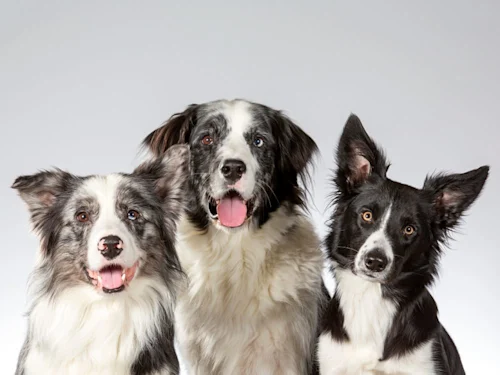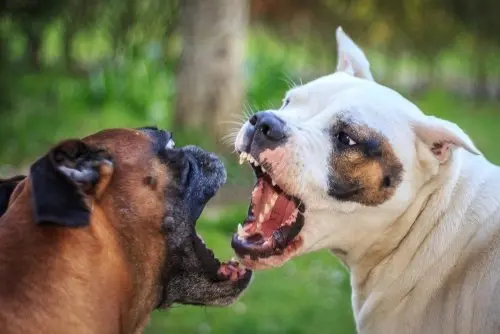
Understanding Your Dog’s Body Language
Table of Contents
Life would be a lot easier if your dog could talk.
If your pup could tell you how they were feeling, you’d know when they’re happy, annoyed, hungry, or sick. But while your dog can’t talk, their body language can clue you in to how they’re feeling.
Read on to learn all about what your dog’s body language means; some of the signs may just surprise you.

Stressed Dog Body Language
Just like us, your dog can feel nervous or stressed. Some dogs tend to get stressed at the vet or can be easily frightened while out on their daily walk. Others may experience separation anxiety or be scared of certain sights and sounds.
Stressed dog body language can range from the more subtle (such as tension and lip-licking) to more obvious shaking, panting, and pacing. Here are some signs your dog could be feeling anxious according to the VCA:
•Crouched body
•Closed, tense mouth
•Alert or pinned back ears
•Long yawns and excessive lip-licking
•Whale eyes—when you can see the whites of your dog’s eyes
When it comes to canine body language, stress, anxiety, and fear are closely related. More specifically, if your dog becomes tense and puts their tail between their legs, this is a sign of fear.

Aggressive Dog Body Language
Dog communication is complex. One moment your dog can be relaxed, but the next seemingly aggravated. That’s why paying attention to a dog’s body language can help keep you, your pets, and your family safe.
According to the American Kennel Club, here are a handful of aggressive dog body language signs to know:
•Pinned back or alert ears
•Bared teeth or curled lips
•Squared-off, tense, and very quiet stance
•Stiff and straight tail
The most tell-tale sign a dog may be aggressive is their body posture. The meaning of the body language position of a dog can be situational, but an aggressive dog is typically in a guarding posture with their neck lower than their shoulders and head lowered and stretched forward.

Body Language of a Dog in Pain
No one wants their pup to be in pain, but it can happen. When dogs are injured or sick, instinct kicks in, and they typically try to hide their pain so they wouldn’t be noticed by predators. As pet owners, it’s our responsibility to know the signs of pain in dogs to help them get the help they need.
Here are some telltale signs your dog may be experiencing pain:
•Obsessive licking of injured area
•Grimacing or tense facial expression
•Head down
•Defensive posture or abnormal posture
If your dog is in pain, they don’t act normally. This is especially true when it comes to your dog’s body language. Dogs that are in pain may stand with their front legs under their chest if they have a hip or leg injury. They may also sit with their rear legs splayed.
When a dog is in pain, it’s often accompanied by other symptoms like a loss of appetite, lethargy, and new vocalizations. If you think your pet is in pain, reach out to your vet right away.

Happy Dog Body Language
Of course, we can’t forget to talk about how to read your dog’s body language when they’re happy!
A happy dog can be relaxed and at ease or excited, but their body language can be different depending on each scenario.
A happy, relaxed dog’s body language is signified by:
•Relaxed posture with weight evenly distributed on all four paws
•Head up
•Soft eyes and relaxed lids, which may look like your dog is squinting
•Tail down in a neutral position
A happy, excited dog can be more animated:
•Ears perked up
•Wide, focused eyes
•Hair standing up
Your dog can be in a positive emotional state when they’re playing, meeting people and dogs, or eating. You’ll likely notice their tail wagging excitedly. According to The Spruce, if a dog is wagging its tail and the rest of its body seems relaxed or is moving along with the wagging, your dog is likely happy and comfortable.
However, remember that if your dog’s body language is stiff and rigid and they’re wagging their rail, this could be a sign of aggression.
When it comes to understanding your dog’s body language, it’s always important to look at the bigger picture. Take in your dog’s posture from nose to tail along with the situation and your pup’s personality. This can help you understand if your dog is stressed, aggressive, in pain, or content.
Get more tips and tricks for understanding your dog from our blog!

Our Meals Change Lives.
(Theirs + Yours.)
See health improvements from our raw meals in as little as 1 week.
